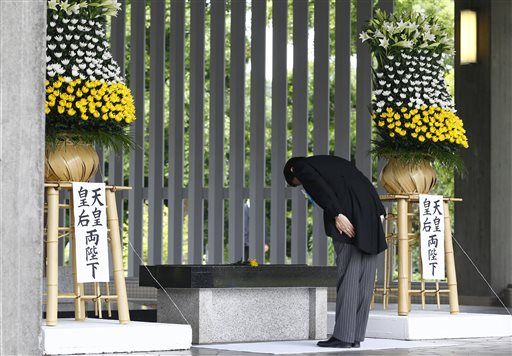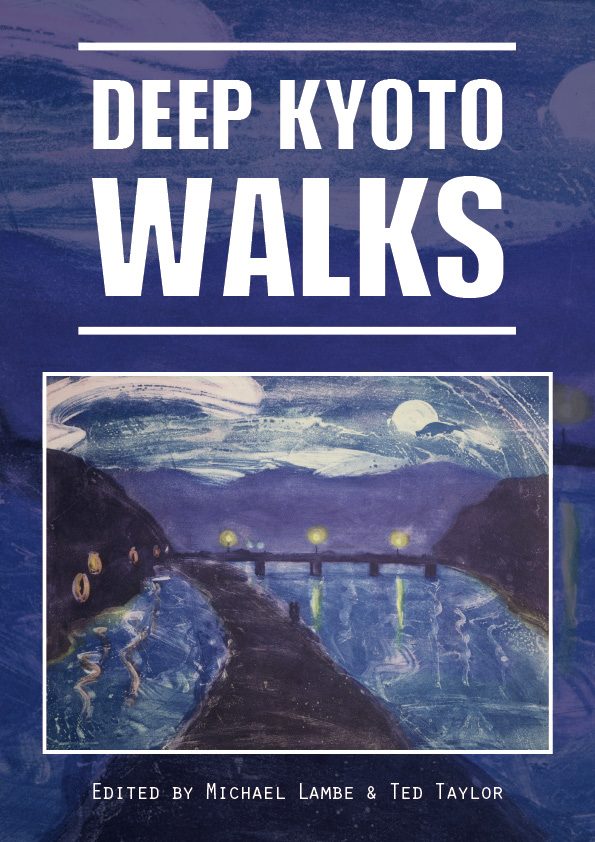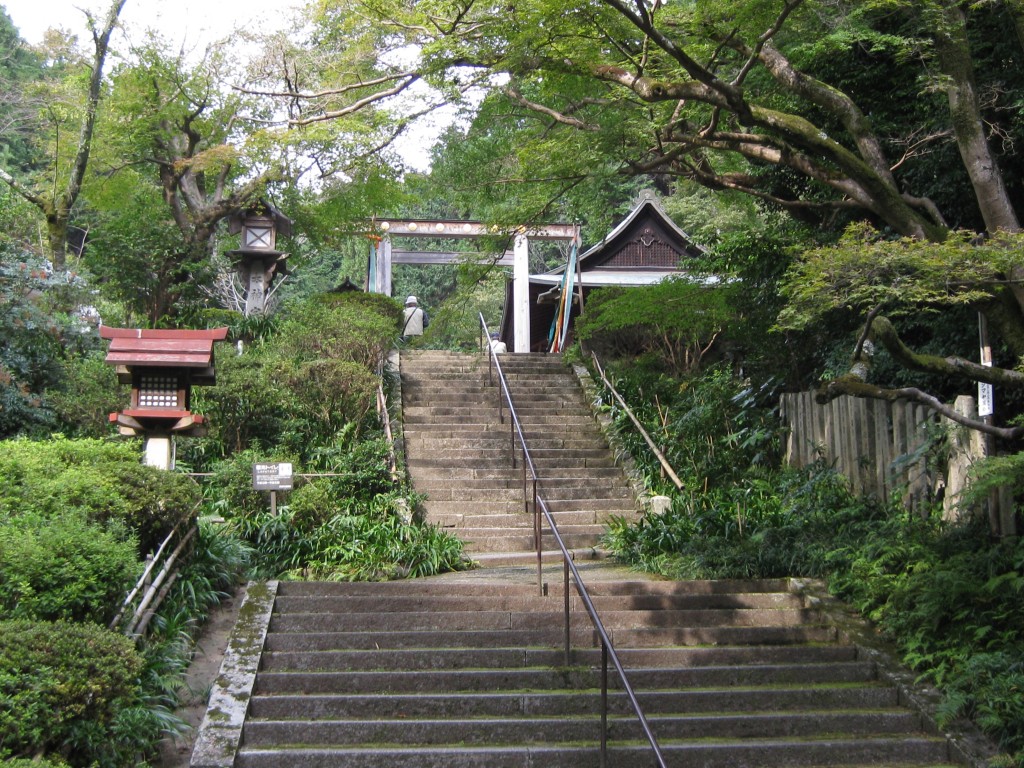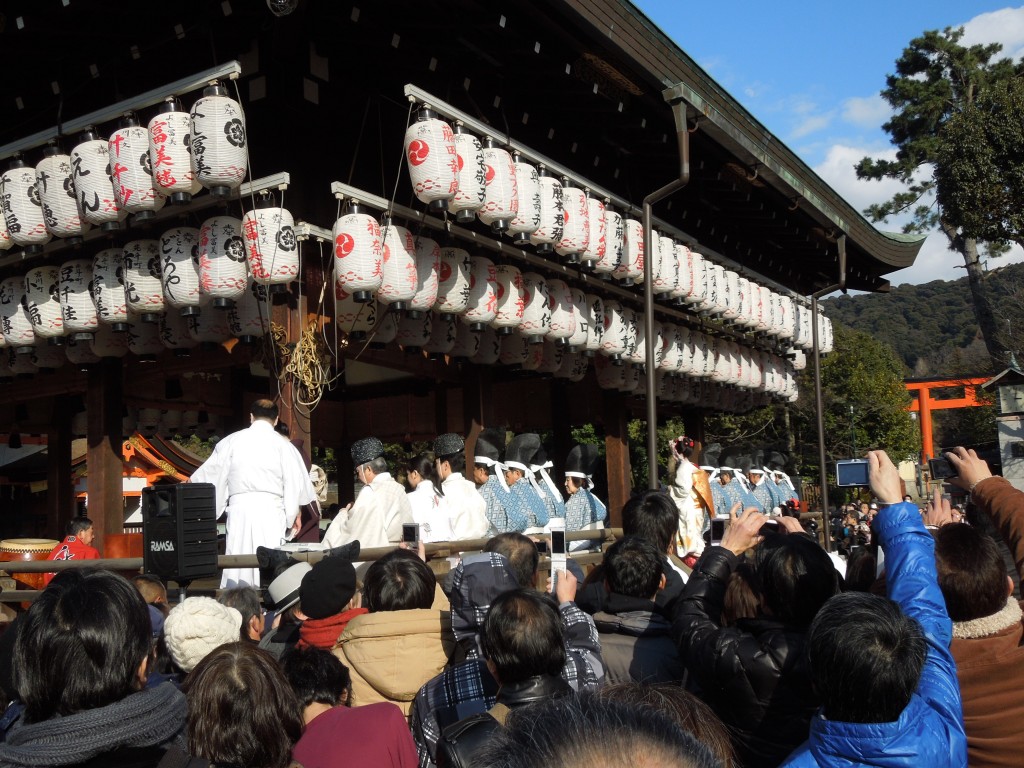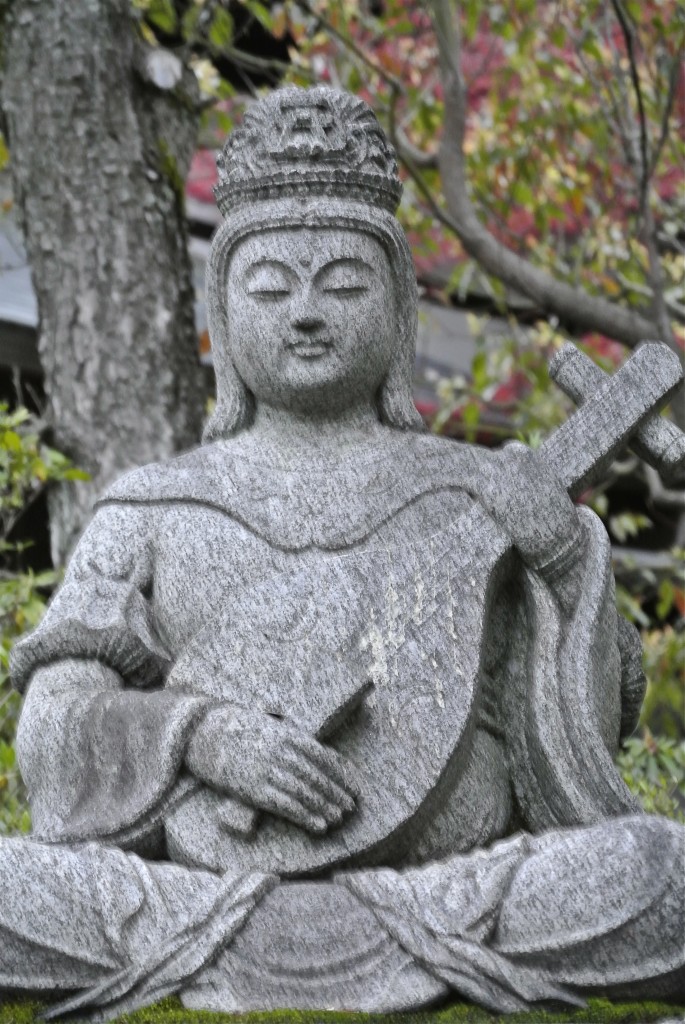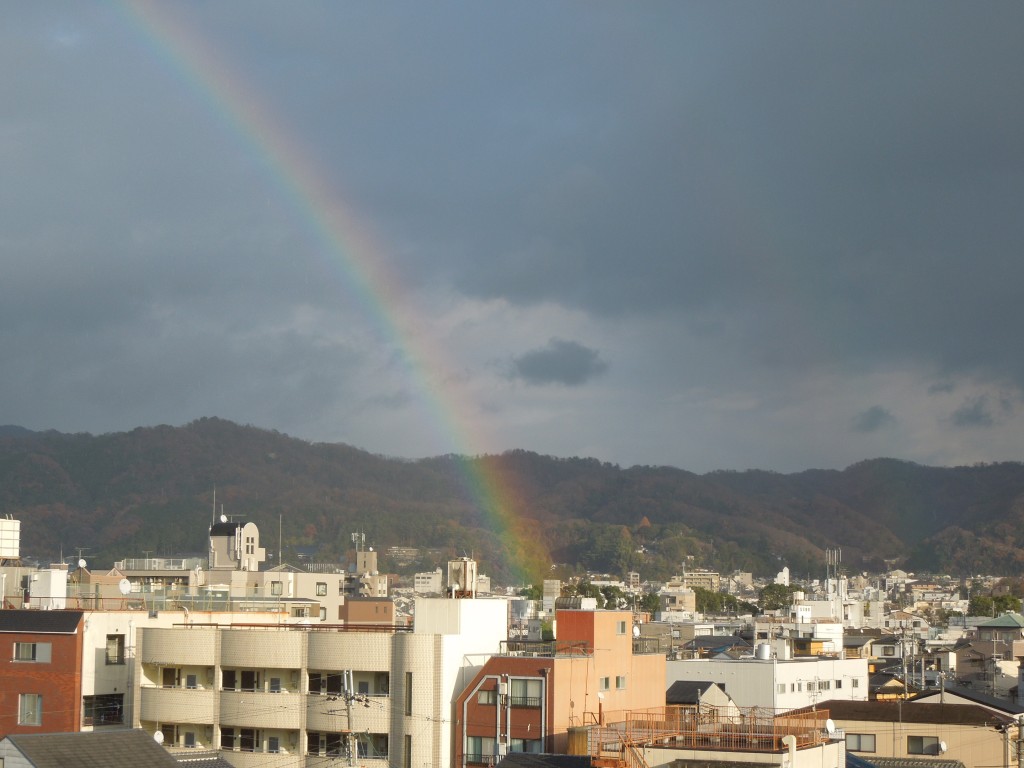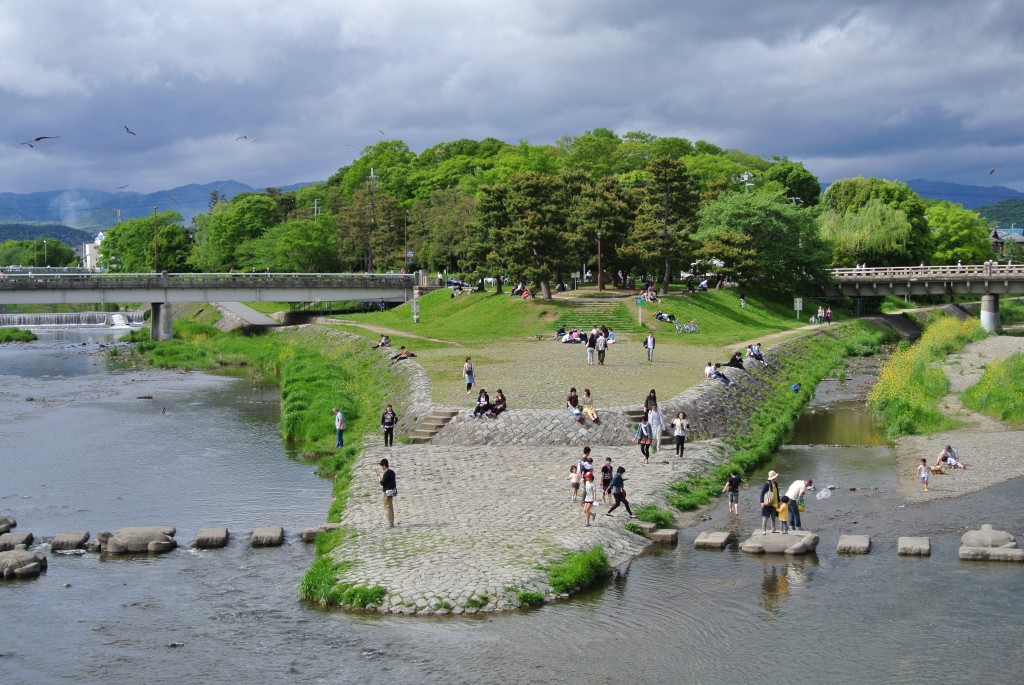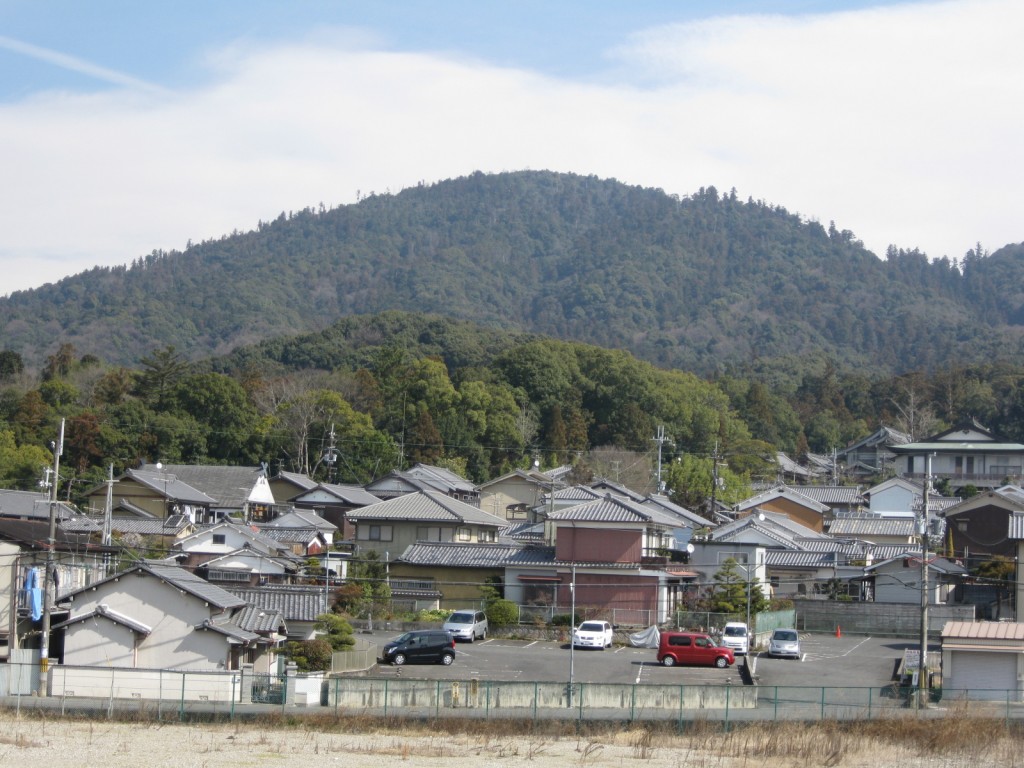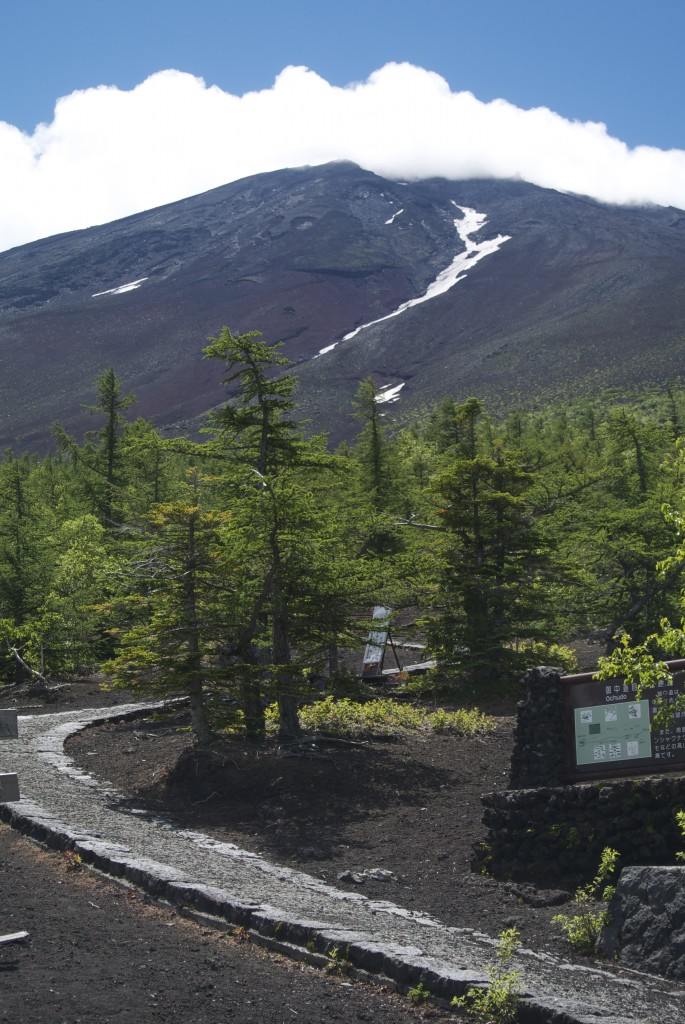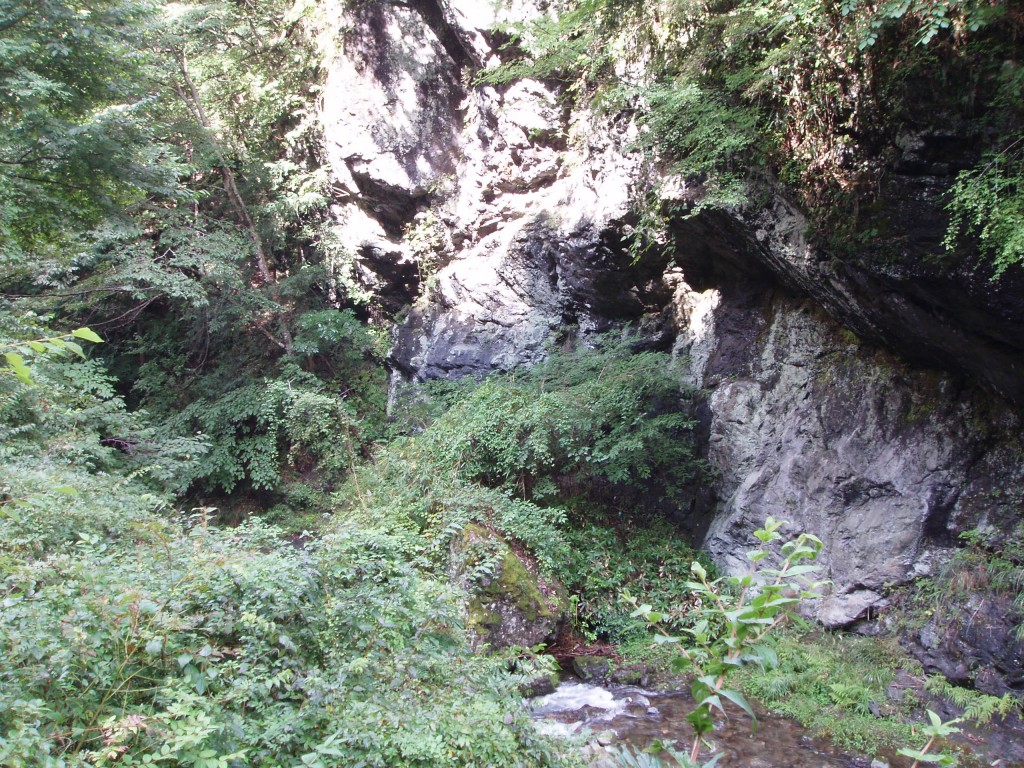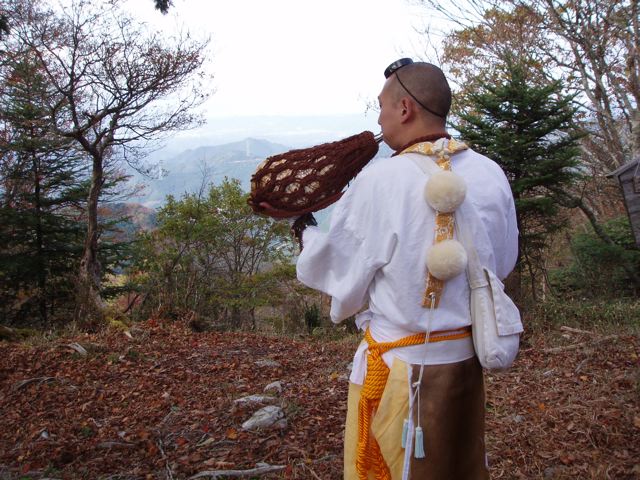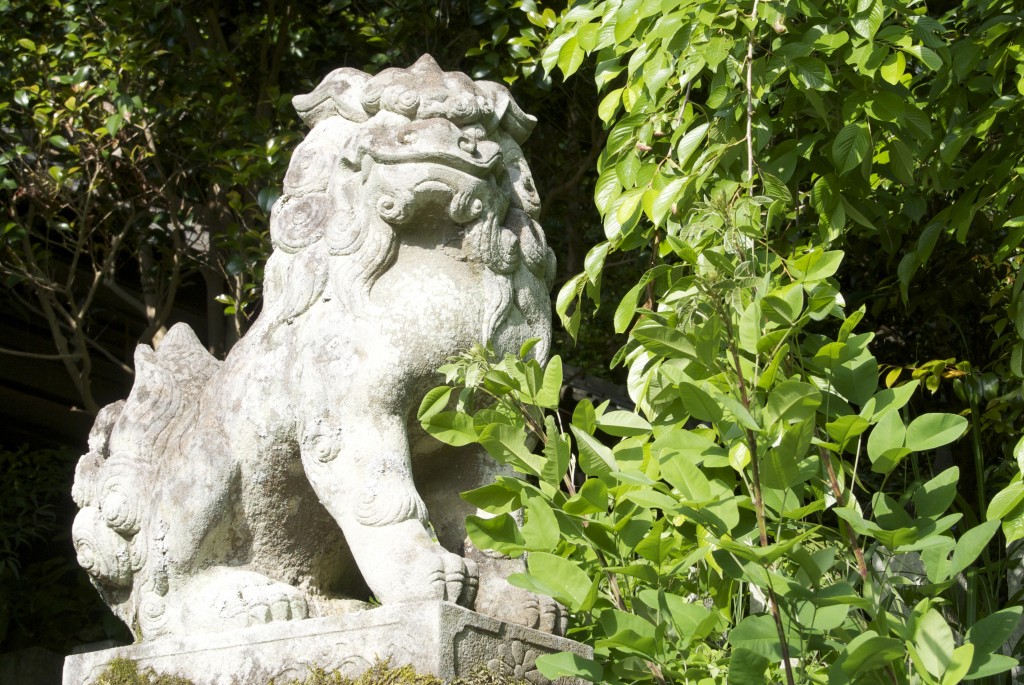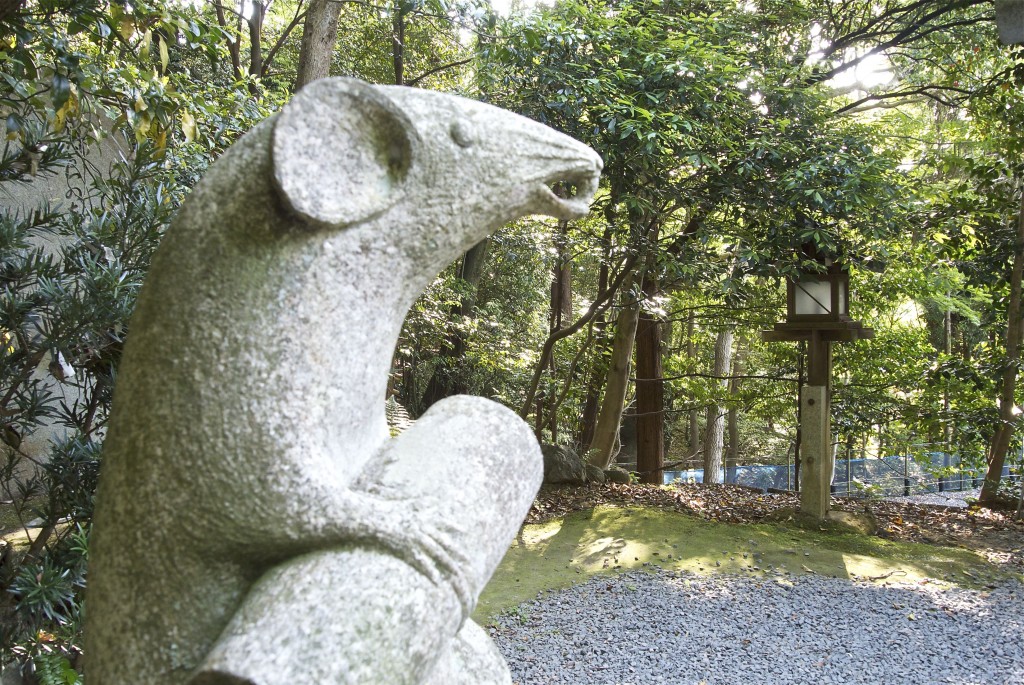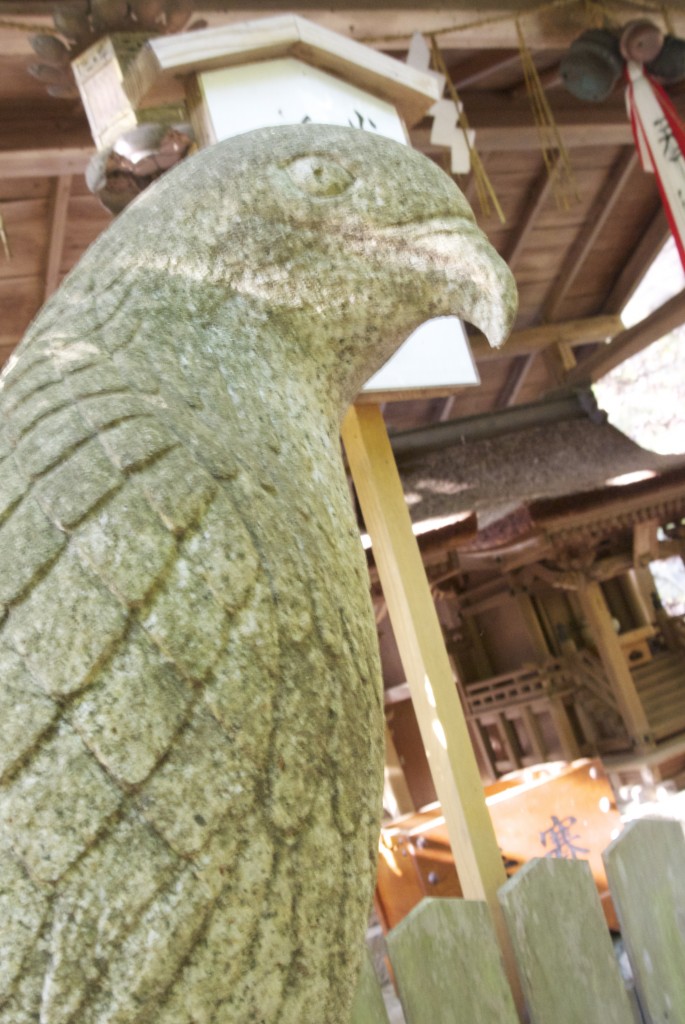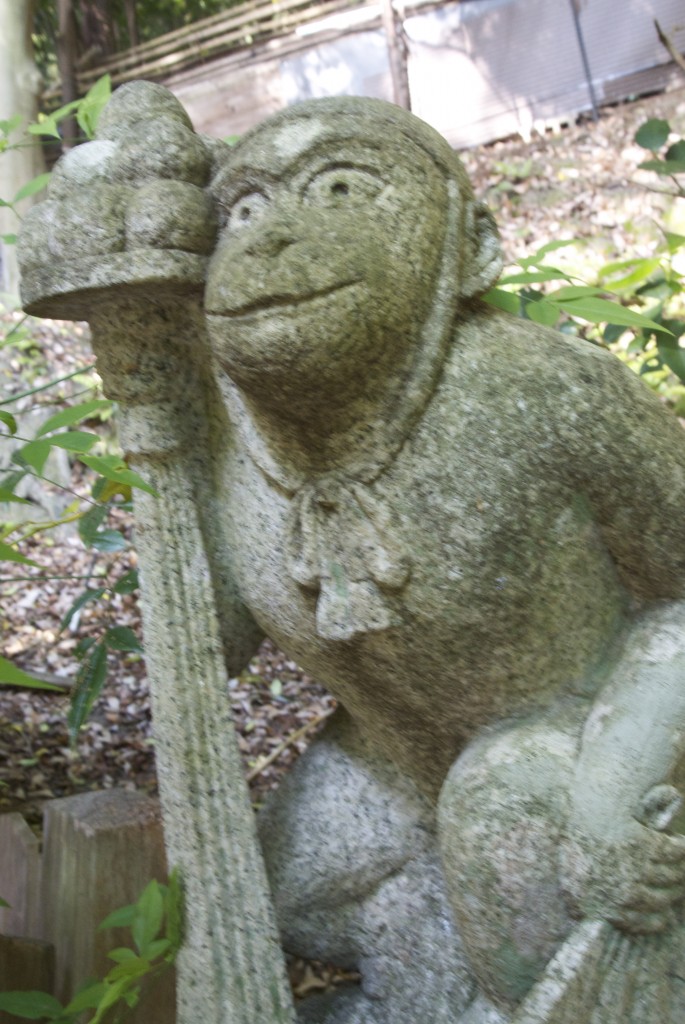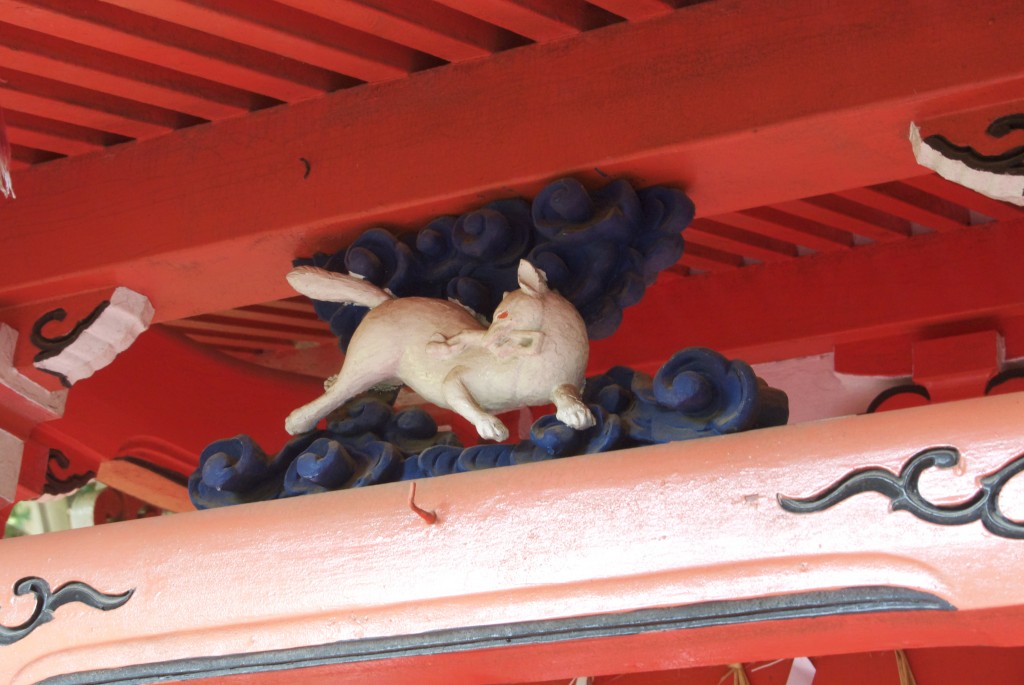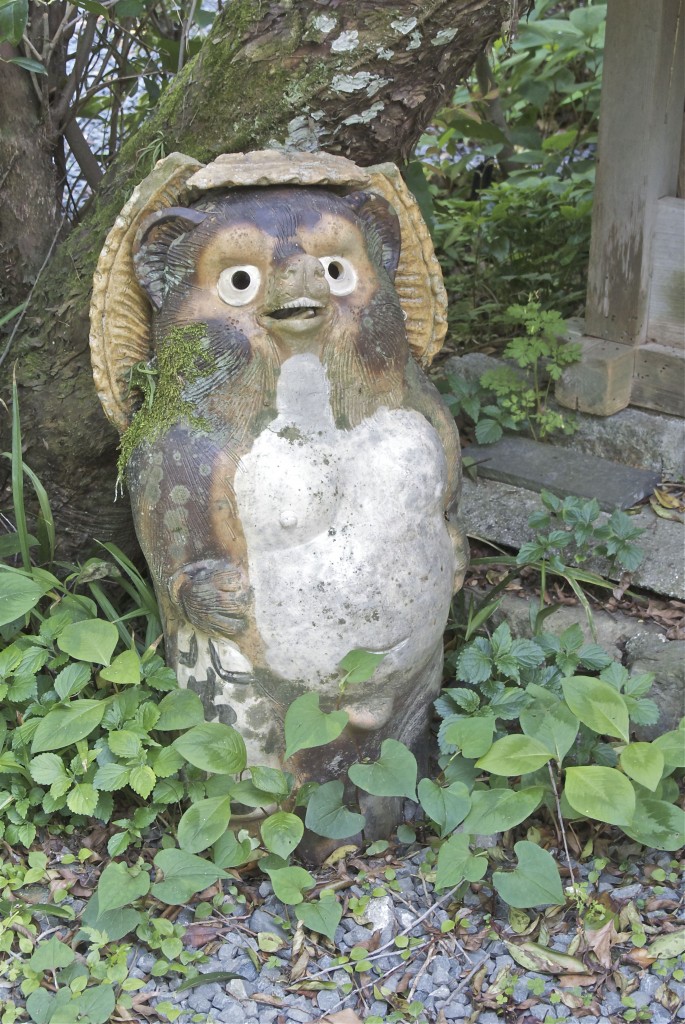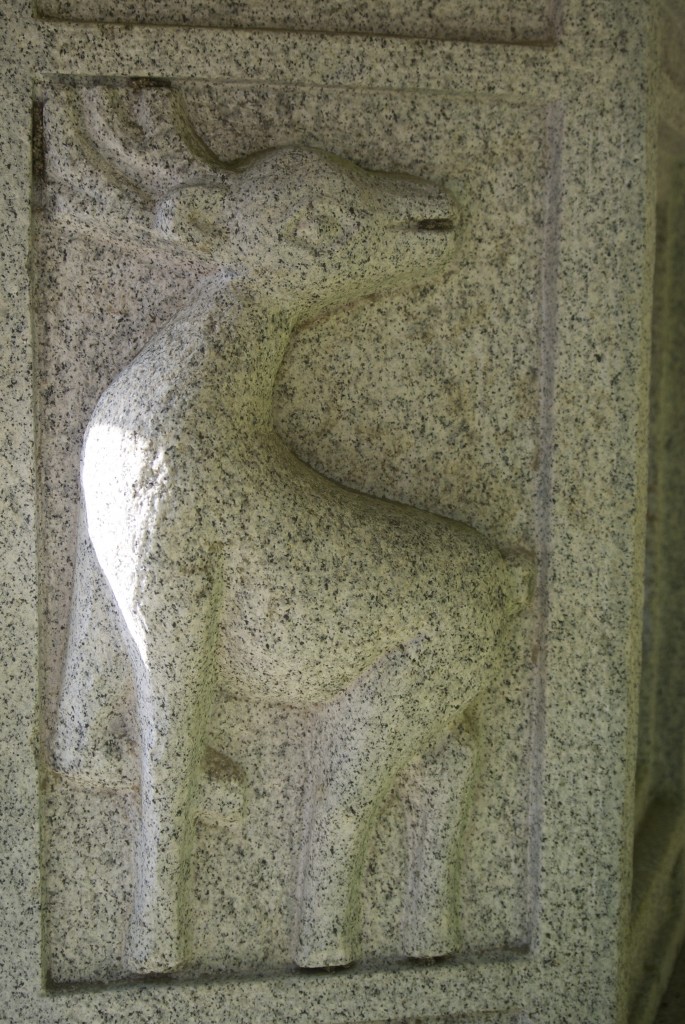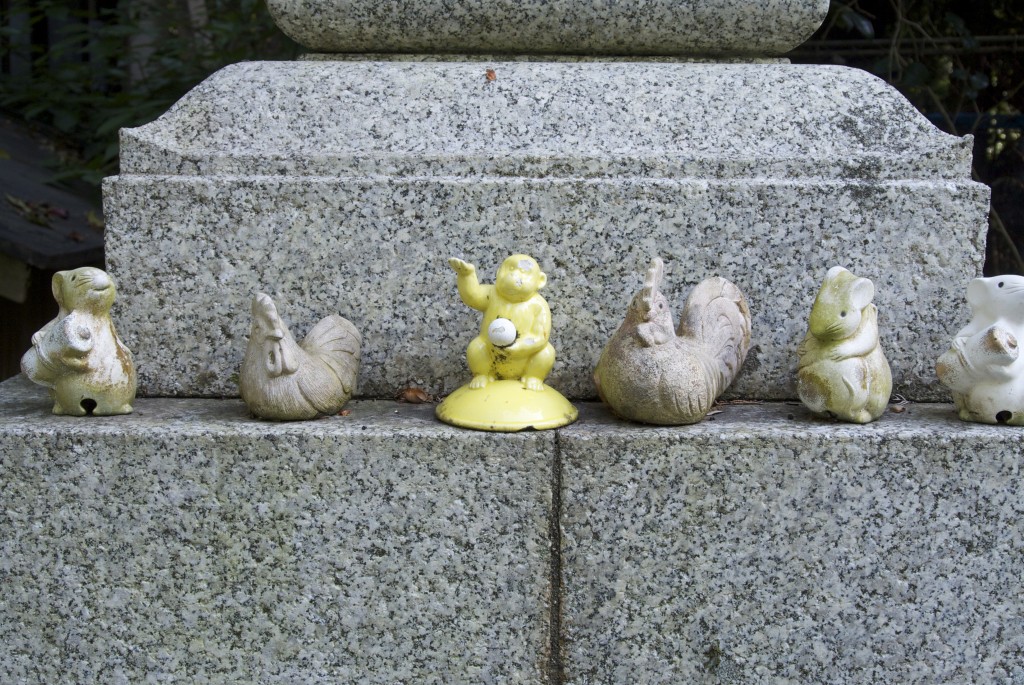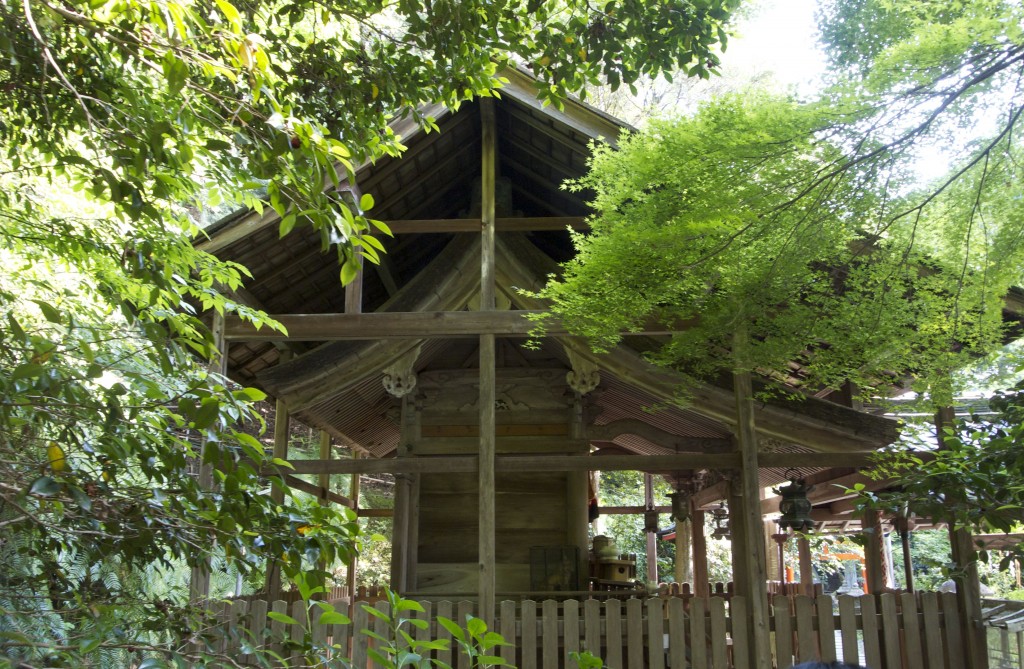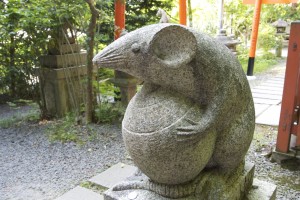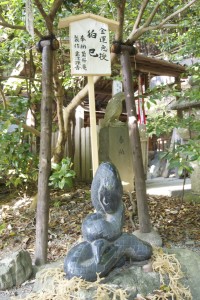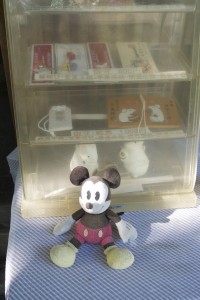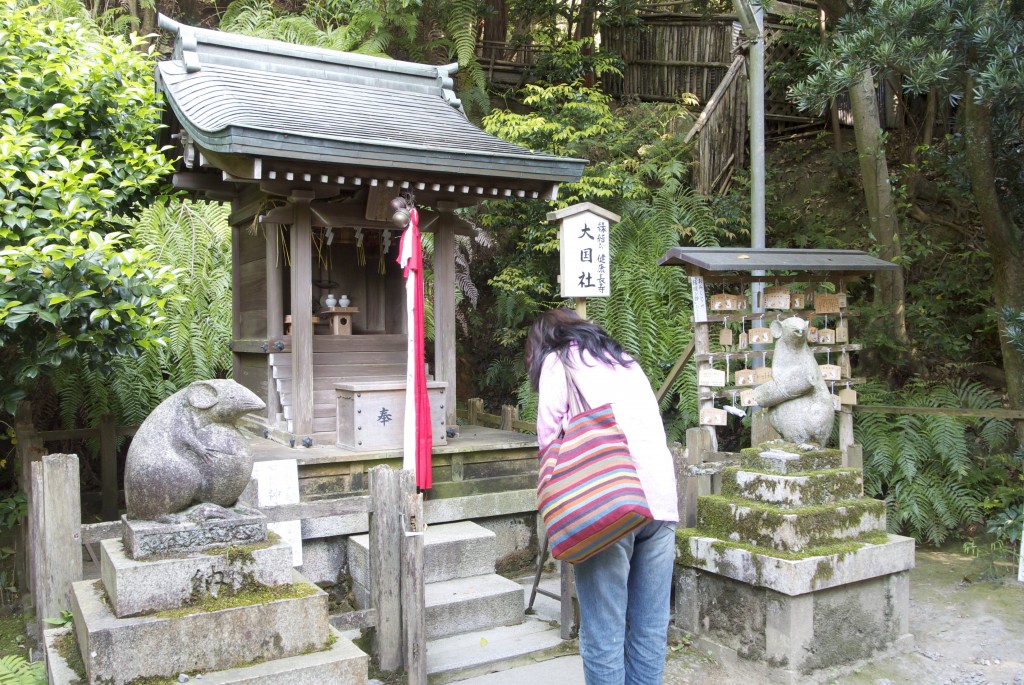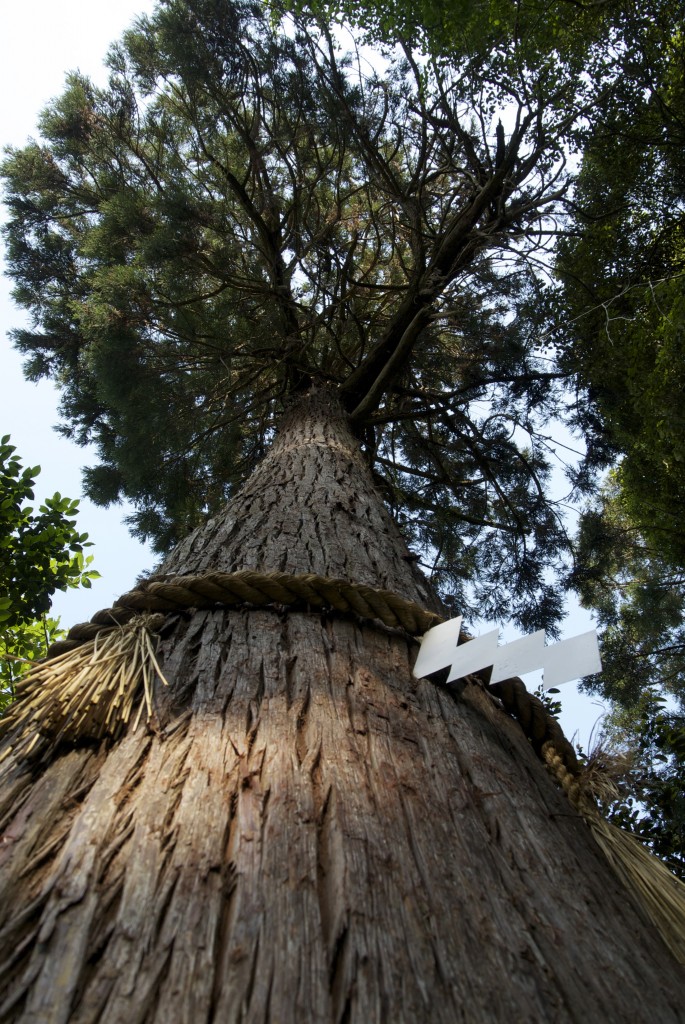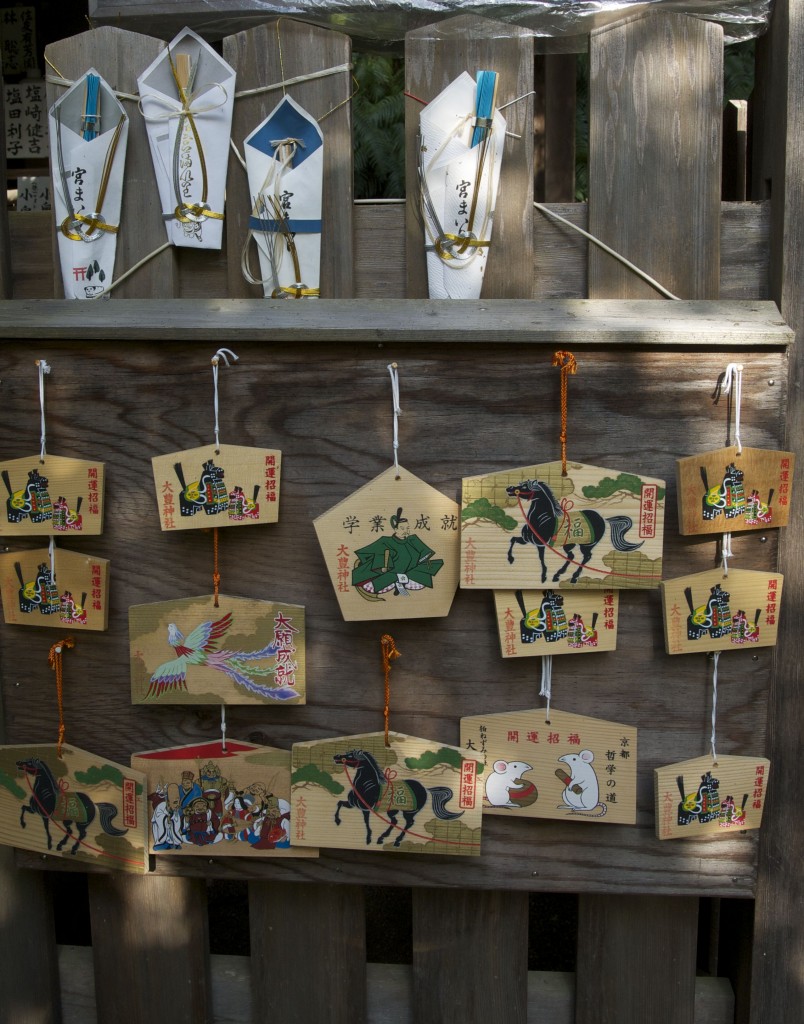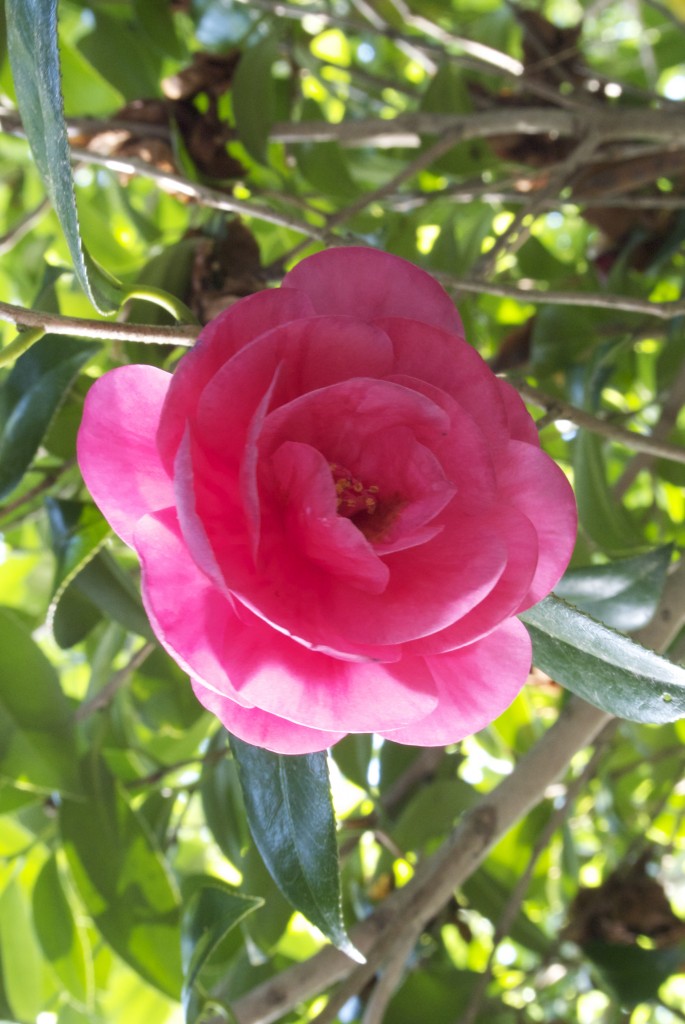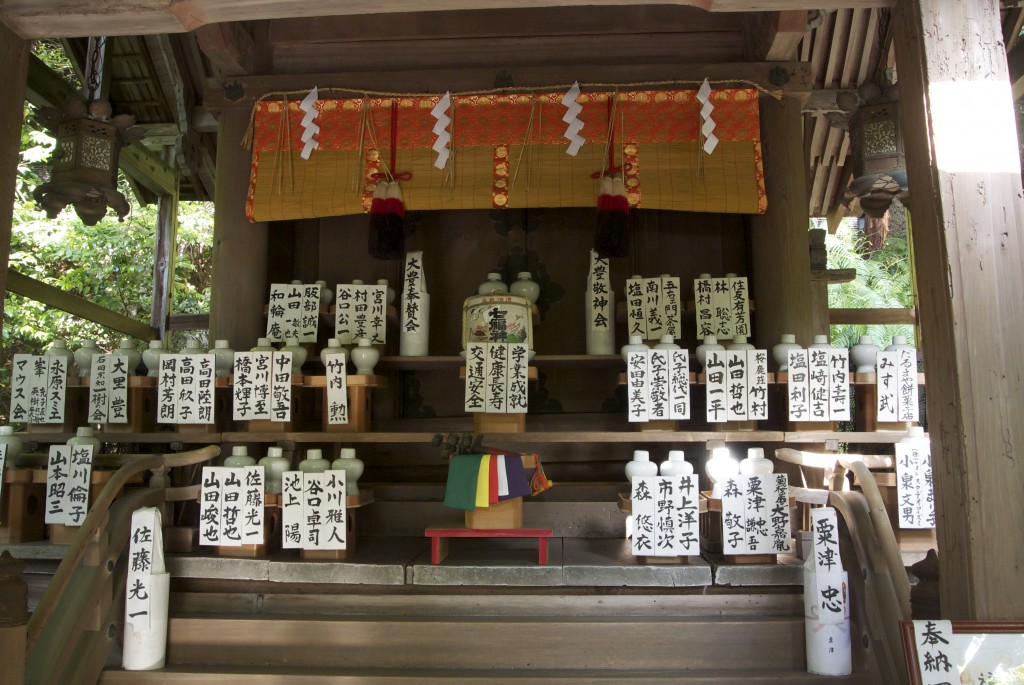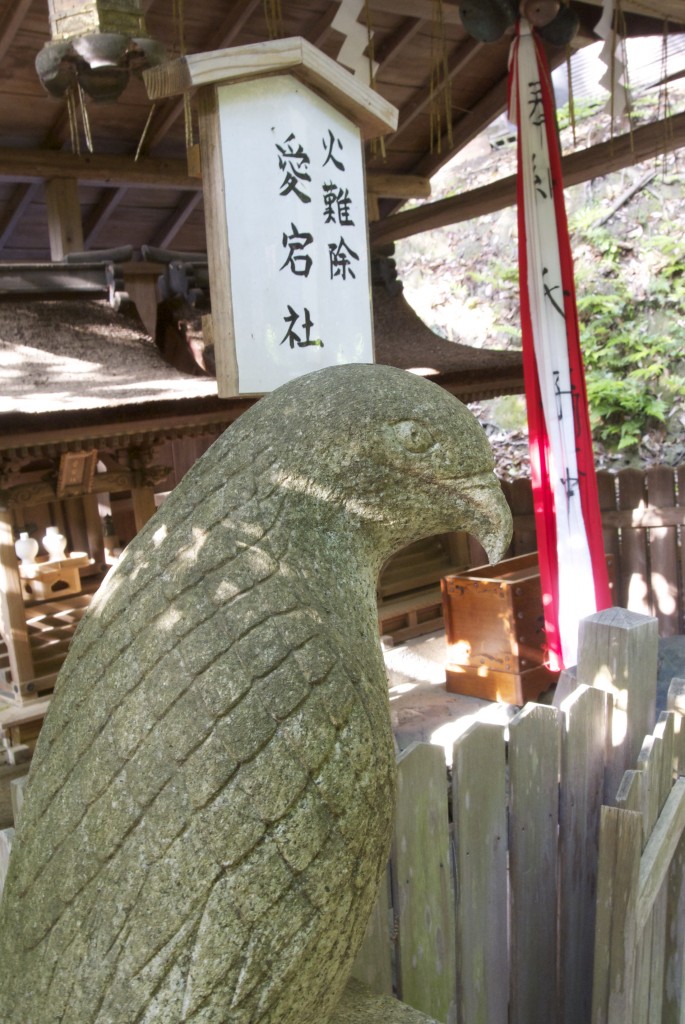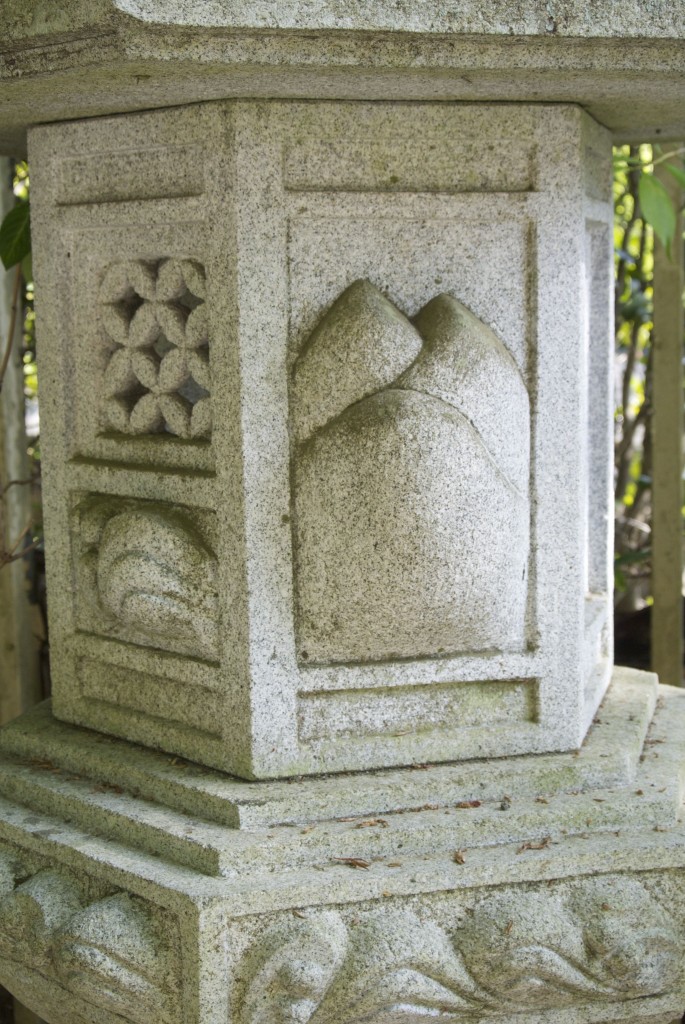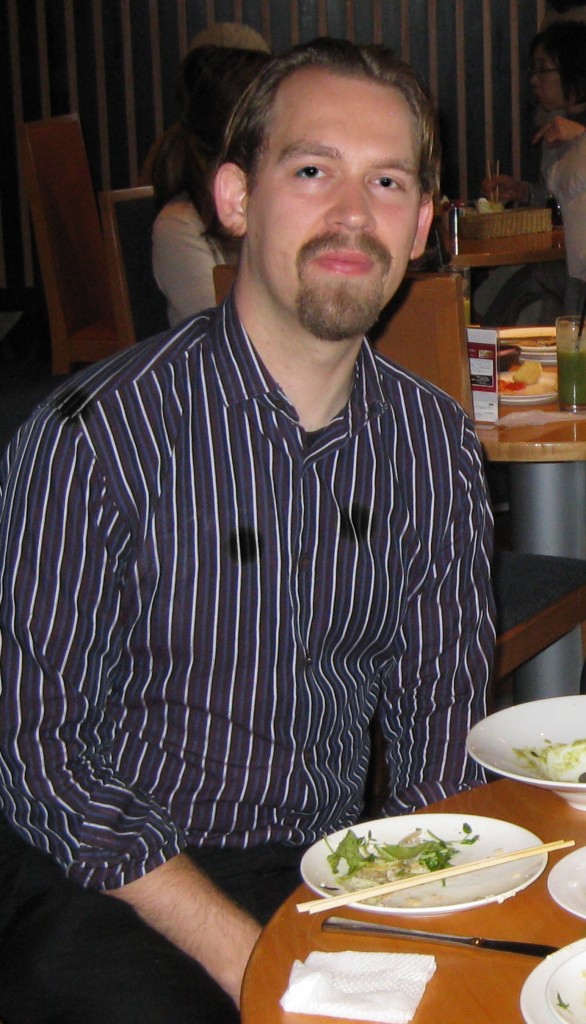One of the exciting developments that Green Shinto is able to participate in is the spread of Shinto overseas. Such is the age we live in that this is happening step by step before our very eyes, as it were, and recent months have seen the establishment of an International Association for Inari Faith with a Facebook page, together with what is probably the first ‘private’ maintenance by a non-Japanese overseas of a wakemitama (divided spirit) of Inari Okami. In the interview below, the person behind all this, Gary Cox, explains the nature and purpose of the new association.
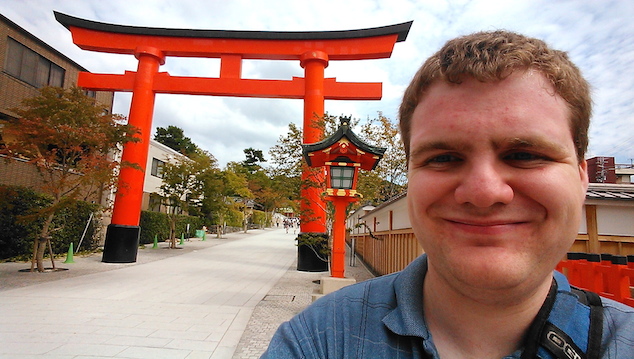
Gary Cox at the entrance to Japan's premier place of Inari worship, Fushimi Inari Taisha in the south of Kyoto
1) When and why was the International Association for Inari Faith set up?
I have always felt deeply drawn to the ancient, natural spirituality in Shinto, ever since I first learned of it. I had always been drawn, especially, to Inari Ōkami, as well as to foxes and snakes ever since I was little, which happen to be Inari’s shinshi (messengers of the kami). But after about ten years of study in various religions, I came to realize that Shinto, especially Inari shinkō (Inari faith), really were my personal calling among all others. And so last year I was able to be entrusted with a wakemitama (divided spirit) of Inari Ōkami from Fushimi Inari Taisha, which I now enshrine at my home in California.
And around that same time, I began meeting many other people, online and off, who were also close devotees of Inari Ōkami. I wanted to form an organization where we could come together, sharing and learning from each other. There was also not a great deal of English materials available on Inari (especially online) — so this was something I wanted to try and address as well.
So, with the assistance of a number of friends, but especially my close friend Olivia Furukawa as well as Morgan Rose, the association was founded as a Facebook group on April 1, 2014. We hope to provide greater access, resources, and a strong community for individuals interested in Inari Ōkami.
2) What does the Association consist of exactly, and what are its activities?
Currently, the association exists only as a Facebook group, though we will be forming a website and incorporating as a California non-profit organization later this year. The Facebook group, at present, consists of devotees and interested people from North and South America, Europe, Australia, Africa, and Asia, including kannushi (priests) from Japan and the United States.
Right now our biggest focus has been providing reliable English-language information and resources. So far we have published two Inari norito (Shinto prayers) both in their original form, as well as in romaji and English forms (to understand meaning) that we commissioned. The norito which we have published in this form are the Inari Norito (Inari Prayer) and Inari Ōkami Himon (Secret Incantation of Inari Ōkami). Inari Daimyōjin no Harai is also in the process of being translated. We are also publishing short articles explaining the basics of Inari theology, symbols, shrines, and other matters.
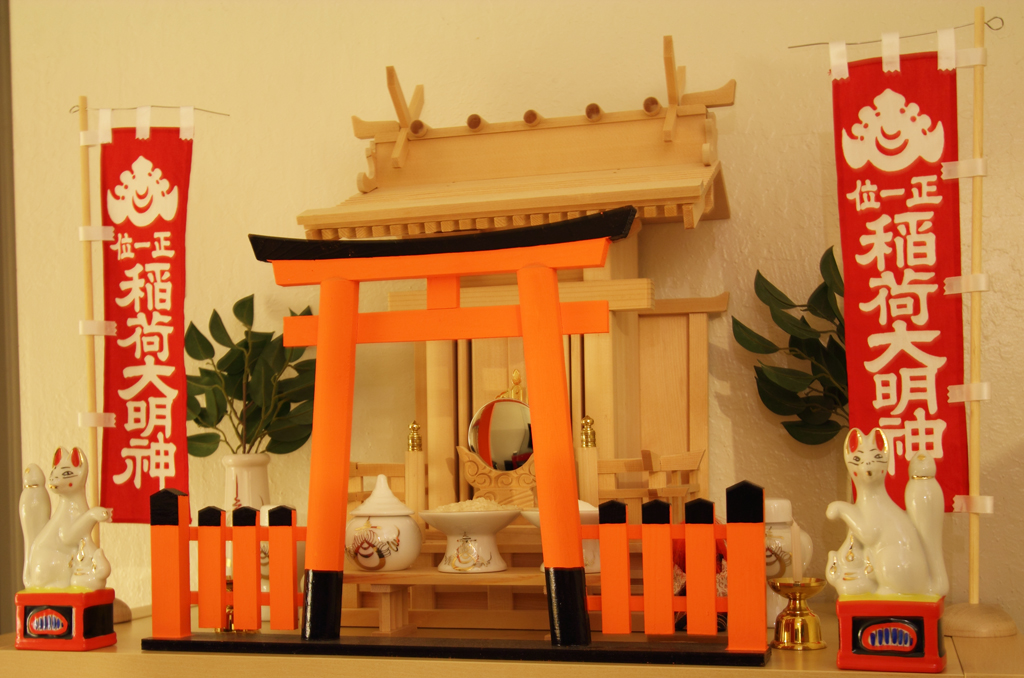
The kamidana (house altar) containing the wakemitama that Gary maintains, with white fox guardians to either side
3) What are some other immediate goals of the Association?
I am hoping we can facilitate more group discussions online, and possibly, if there are enough local people, have some offline activities in the San Francisco Bay Area, or any other areas where there might be enough interested people.
In addition to more discussions and social activities, and continued publication of materials and articles, we are also looking at ways to make Inari ofuda (talisman) more accessible to people who want one for worship. Right now, there is virtually no way to order one from a reputable source from outside Japan. They are of course quite easy to obtain inside Japan… so this is a gap that we are hoping to bridge.
4) What is the relationship of the Association with Fushimi Inari Taisha (or indeed with other shrines)?
Aside from my indirect association as being on the shrine’s rolls as a goshintai custodian, we currently have no direct official status with Fushimi Inari Taisha. There do exist many kō, or lay worship groups, that are affiliated with Fushimi Inari Taisha; however, the feeling among our members is that it would be best for this group to remain open and not under the jurisdiction of a single shrine and its interpretations or rules.
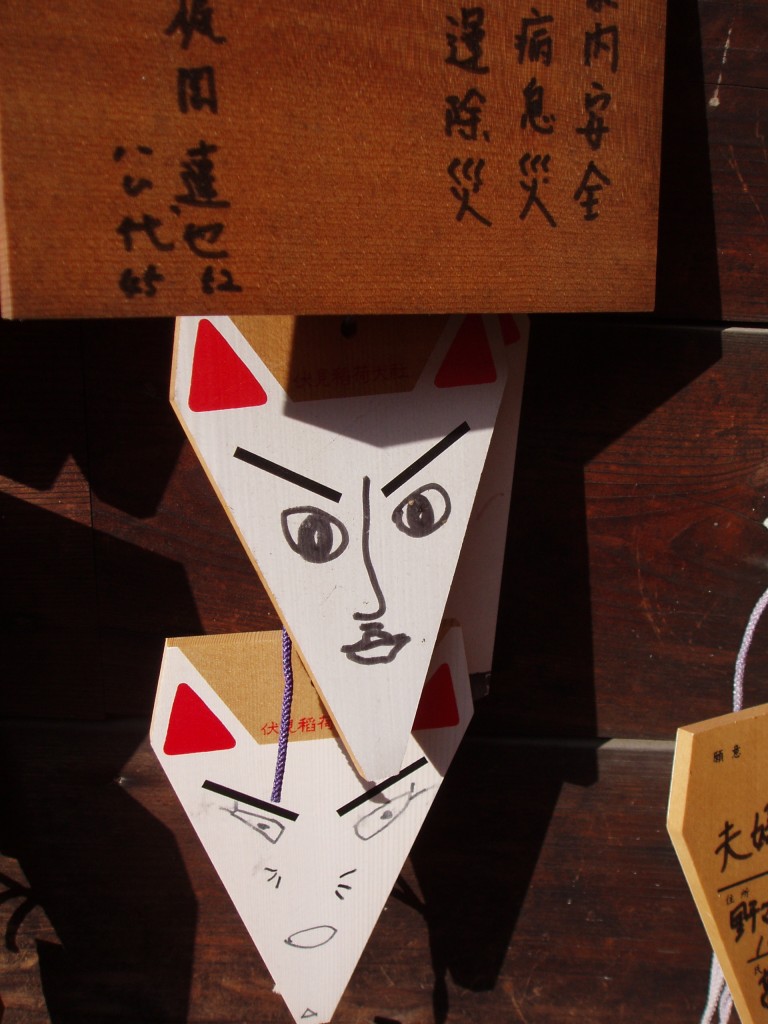
The ema at Fushimi Inari Taisha, on which visitors draw fox faces on one side and their prayer requests on the other
We are quite close to Tsubaki Grand Shrine of America. Rev. Koichi Barrish, the Negi of that shrine, is a mentor, a member of the group, and a number of the group members– such as myself— are also Sukei-kai members of Tsubaki Grand Shrine of America. The enshrined kami of Tsubaki America are Sarutahiko Ōkami and Ame no Uzume no Mikoto, as well as Uga no Mitama no Ōkami. These kami have a very close relationship to Inari Ōkami.
5) Why is Inari Ōkami, in particular, the focus of your Association rather than other kami?
Well, first, there already exist a relatively great deal of international resources for Shinto more broadly. Now, to any devotee of Inari-sama who worships within a Shinto framework, these are still very important. (For those who revere Inari-sama through the Buddhist framework, there are of course also a tremendous deal of resources for Buddhism more widely).
But these broader resources do not delve much into the specifics of Inari. Whether we are talking about Shinto or Buddhism, the “Inari varieties” of either one do have their own variations and additions in things as wide-ranging from practices and prayers to mythos and architecture. So one reason we formed an organization for this one kami in particular is to specialize, if you will, in the specifics of the Inari shinkō (Inari faith).
It is also worth noting that Inari is often considered to be a composite kami, that is, a kami consisting of or having the essences of multiple other kami. For instance, earlier I noted that the enshrined kami of Tsubaki Grand Shrine of America had a close relationship with Inari Ōkami… this is because Sarutahiko Ōkami and Ame no Uzume no Mikoto, along with Uga Mitama no Kami, are all considered to be part of Inari Ōkami (in fact they were the original three deities enshrined on Inari mountain in Kyoto, now the site of Fushimi Inari Taisha which is the head shrine to Inari-sama).
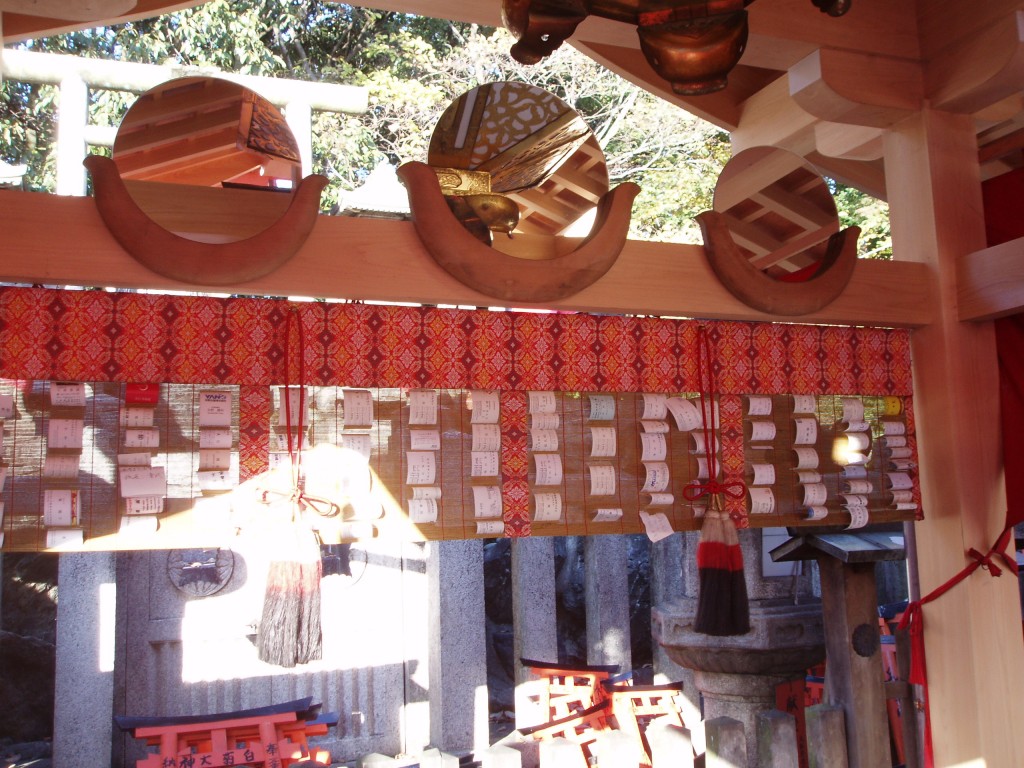
Three mirrors in a subshrine on Inari Hill representing the three original components of Inari Okami
There are other kami that are identified with Inari-sama as well. So while our organization is, in one manner of speaking, devoted to one particular kami, we are in another way devoted to a whole spectrum of Shinto kami that, through their close relationship with one another, are considered to fall under the umbrella of Inari Ōkami.
6) Looking ahead fifty years or so, how do you imagine the Inari faith may have developed outside Japan?
It is our hope that Inari faith may continue to grow and become more recognized around the world. Just as Shinto as a whole is growing steadily internationally, it would be great to see Inari Ōkami sparking interest in individuals even outside of Japan.
It is important to remember, though, that Inari faith is only a part of Shinto. Granted, it is, to many of us personally, a very important part, a part that we devote our hearts to. But I believe it’s important that Shinto as a whole, not just Inari faith, develop around the world together. In this way, the whole, rich and diverse spirituality of Shinto, and the balance of Daishizen (Great Nature) as a whole, can be preserved and shared all over.
So it would be wonderful to see a proliferation of international Inari shrines in 50 years’ time. But truthfully, I think the wider hope should be to see Shinto shrines of all kinds, with healthy communities of believers (shinja), helping each other to develop their faith and to Iive in harmony with nature.
*********************************************
Gary Cox can be contacted by email at this address; gary[at mark]inarifaith.org
The Facebook page for the Association is at https://www.facebook.com/groups/inarifaith/?fref=ts
(A website will be constructed soon at the following link: http://inarifaith.org)
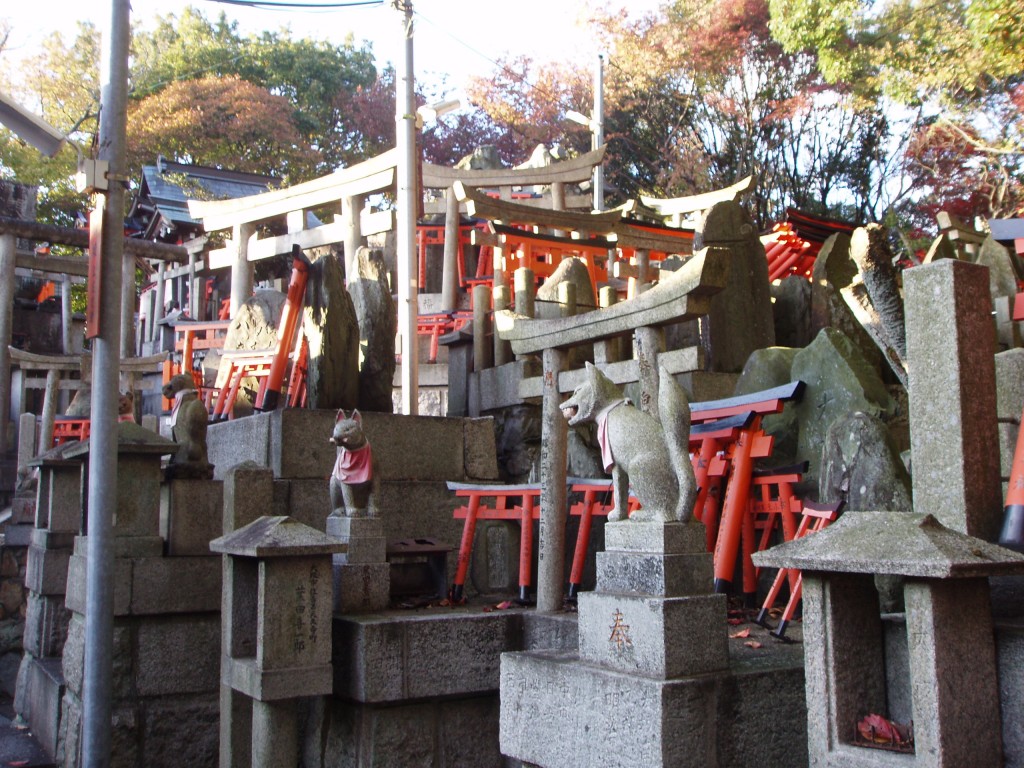
Inari Hill, behind Inari Fushimi Taisha, is a teeming mass of torii, statues and rock shrines, testimony to the thriving folk faith of generations of believers
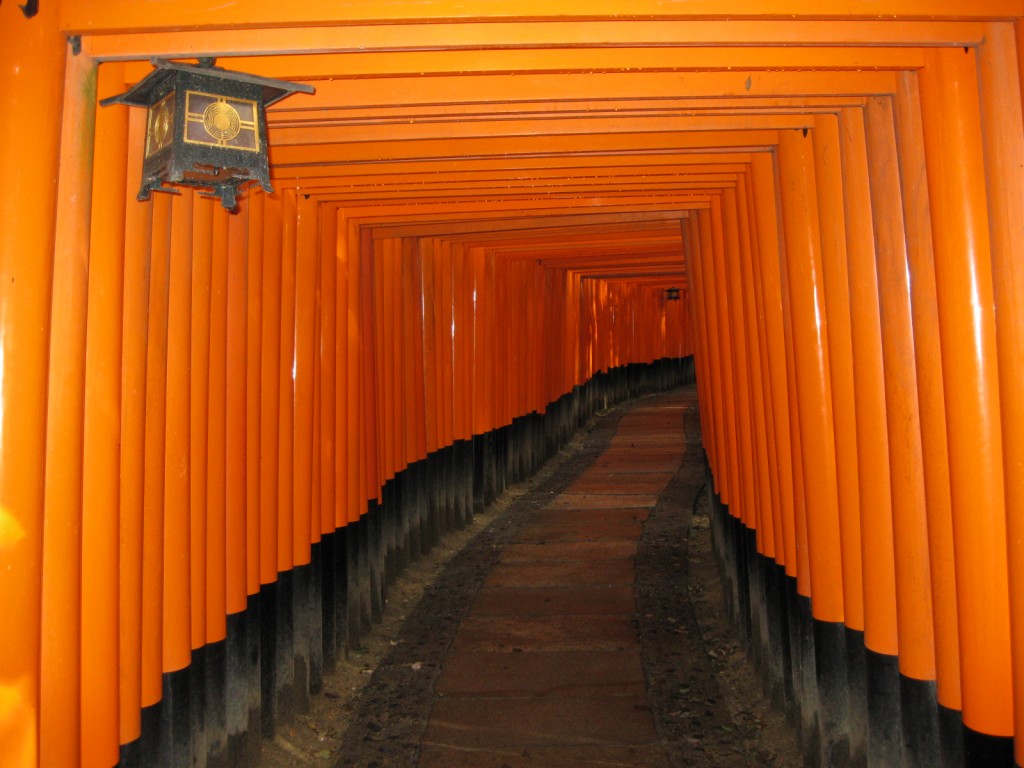
The famous torii tunnel at Fushimi beckons the visitor ever further and deeper into the mysterious hinterland

